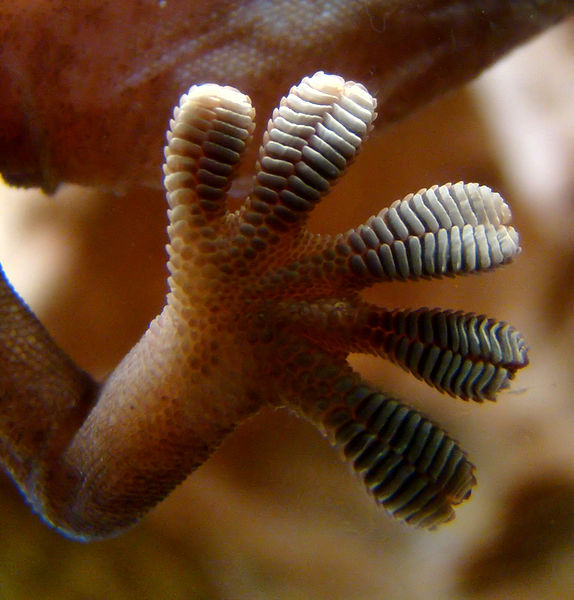We're open daily! View holiday hours
Science News
Gecko-inspired Stickybot
August 30, 2010

Let’s face it. Geckos are really, really awesome. Super colorful and charismatic, they can climb straight up walls in a few well-placed steps.
Biologists at UC Berkeley initially broke down gecko movement up walls to figure out how they travel up walls. You can watch our Science in Action piece called “Bio-Inspiraton: Gecko Adhesive” about that research.
Since then, scientists’ imaginations have taken over. What can we accomplish using the same properties geckoes use to climb vertically? Last winter, the New York Times reported on a new tape based on gecko’s feet from biologist Kellar Autumn of Lewis & Clark College.
The tape, which is reusable, was so strong, Mr. Autumn said, that when they tested it, he was able to stick his 50-pound, 8-year-old daughter to a window with it.
That was a little more than two years ago; there are now at least 50 patent applications pending in gecko-adhesion technology, Mr. Autumn said, and he holds several patents himself.
The latest entry in gecko-adhesion technology is Stickybot, a robot developed at Stanford that can climb walls. The newest versions of the adhesive that holds Stickybot to the walls was published earlier this month in the journal Applied Physics Letters.
The molecules of gecko toe hair interact with the wall through a molecular attraction called the van der Waals force. A gecko can hang and support its whole weight on one toe by placing it on the glass and then pulling it back.
That’s because the toe of a gecko's foot contains hundreds of flap-like ridges called lamellae. On each ridge are millions of hairs called setae, each one 10 times thinner than a human’s. Under a microscope, you can see that each hair divides into smaller strands called spatulae, making it look like a bad case of split ends. These split ends are so tiny (a few hundred nanometers) that they interact with the molecules of the climbing surface.
The new and improved versions support higher loads and also allow Stickybot to climb surfaces such as wood paneling, painted metal and glass. The material is strong and reusable, and leaves behind no residue or damage. Robots that scale vertical walls could be useful for accessing dangerous or hard to reach places.
Next up for Stickybot, the technology of turning around, also gecko-inspired. According to Stanford’s Mark Cutkosky, “The new Stickybot that we're working on right now has rotating ankles, which is also what geckos have.”
But wait there’s more… The Stanford team has started developing Z-Man—a gecko adhesive for human climbing. Watch out, Peter Parker! Spiders have nothing on geckos…
Awesome, right?
Creative Commons image by Bjørn Christian Tørrissen